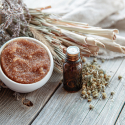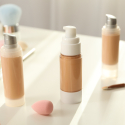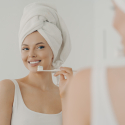Mastering Face Contouring: A Comprehensive Guide
 Face contouring has revolutionized the makeup industry, allowing anyone to define and enhance their facial features with precision. This technique, popularized by celebrities and makeup artists, can seem daunting at first. However, with the right tools and knowledge, anyone can master it. This guide breaks down everything you need to know about face contouring, from basic principles to advanced techniques.
Face contouring has revolutionized the makeup industry, allowing anyone to define and enhance their facial features with precision. This technique, popularized by celebrities and makeup artists, can seem daunting at first. However, with the right tools and knowledge, anyone can master it. This guide breaks down everything you need to know about face contouring, from basic principles to advanced techniques.What is Face Contouring?
Face contouring is a makeup technique that uses shading and highlighting to define and shape the facial structure. By applying darker shades to areas you want to recede and lighter shades to areas you want to bring forward, you can create the illusion of more defined cheekbones, a slimmer nose, and a sharper jawline.
The Basics of Contouring
Shading: Use a contour product that is a few shades darker than your natural skin tone to create shadows.
Highlighting: Use a product that is a few shades lighter to bring attention to certain features.
Essential Contouring Products
To get started with face contouring, you'll need a few key products. These can vary depending on your skin type and personal preferences.
Contouring Products
Contour Stick/Cream: Offers a blendable and buildable formula, ideal for creating natural-looking shadows.
Contour Powder: Provides a matte finish and is best for oily skin types.
Highlighting Concealer/Cream: Enhances areas you want to bring forward.
Highlighting Powder: Adds a touch of shimmer for a radiant finish.
Tools of the Trade
Using the right tools is crucial for achieving a flawless contour.
Must-Have Tools
Blending Sponge: Perfect for seamlessly blending cream or liquid products.
Contour Brush: A dense, angled brush ideal for applying and blending contour powders.
Highlight Brush: A smaller, fluffy brush for precise application of highlight.
Step-by-Step Contouring Guide
Contouring may seem complex, but breaking it down into simple steps can make it more manageable.
Preparation
Cleanse and Moisturize: Start with a clean and hydrated face.
Apply Foundation: Use a foundation that matches your skin tone to create an even base.
Contouring Steps
Identify Your Face Shape: Understanding your face shape helps determine where to apply contour and highlight.
Apply Contour: Use your contour product to draw lines under your cheekbones, along your jawline, the sides of your nose, and around your hairline.
Apply Highlight: Apply highlight to the tops of your cheekbones, the bridge of your nose, the center of your forehead, and your chin.
Blend Well: Use a blending sponge or brush to blend the contour and highlight seamlessly into your foundation.
Tips for Perfect Contouring
Here are some tips to ensure your contouring looks natural and polished.
Contouring Tips
Less is More: Start with a small amount of product and build up as needed.
Blend, Blend, Blend: Proper blending is key to avoiding harsh lines.
Choose the Right Shades: Ensure your contour and highlight shades are appropriate for your skin tone.
Set with Powder: Use a translucent powder to set your makeup and keep it in place.
Common Contouring Mistakes
Avoid these common mistakes to achieve a flawless contour.
Mistakes to Avoid
Over-Contouring: Using too much product can make your contour look unnatural.
Ignoring Face Shape: Applying contour without considering your face shape can result in unflattering results.
Harsh Lines: Failing to blend properly can leave visible lines.
Conclusion
Face contouring is a powerful makeup technique that can enhance your natural features and give you a sculpted look. By understanding the basics, using the right products and tools, and practicing the steps, you can master the art of contouring. Remember, practice makes perfect, so don't be afraid to experiment and find what works best for you.









